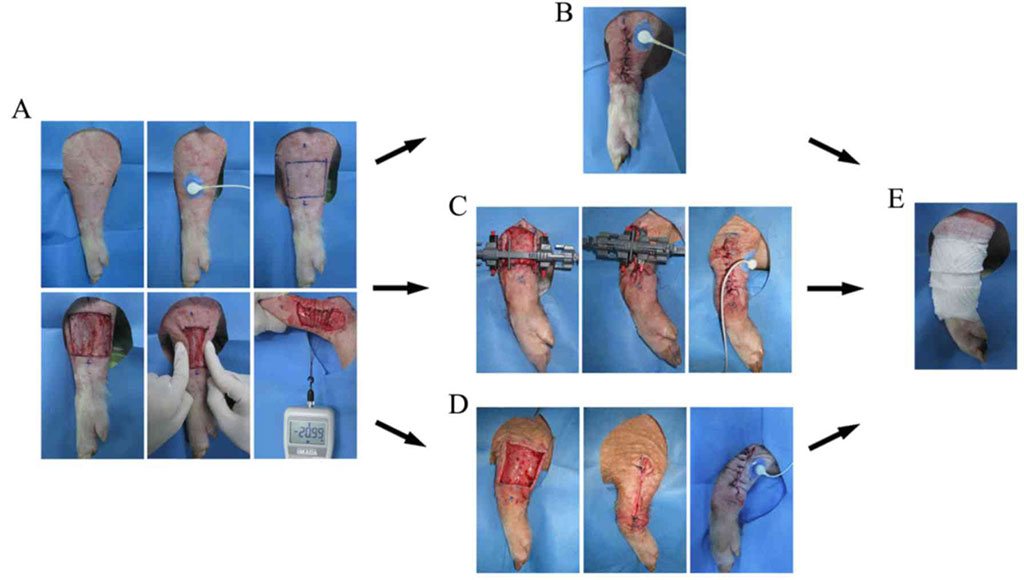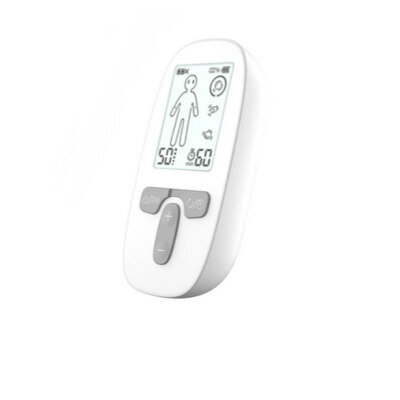Skin-Stretching Device Could Help Avoid Surgical Treatment for Closing Large Scalp Wounds
|
By HospiMedica International staff writers Posted on 13 Oct 2022 |

For craniofacial, maxillofacial, pediatric, and adult plastic surgeons, scalp wounds can pose a difficult reconstructive challenge. For defects that cannot be closed directly, traditional methods include dressing changes or skin grafts or flaps. These procedures have significant disadvantages, including long healing times or complicated operations with general anesthesia. Various skin-stretching devices have been successfully used to treat skin and soft tissue defects in other types of the body. However, few studies have examined skin-stretching approaches for the scalp area. Now, a new study has demonstrated that a creative and innovative, minimally invasive skin-stretching device provides a promising alternative for surgical treatment of large scalp defects. For many patients with scalp defects, the relatively simple skin-stretching technique may avoid the need for complex skin flap or graft procedures or prolonged healing times – with good functional and cosmetic results and a low complication rate, according to the study’s findings.
Researchers at the Chongqing University Central Hospital (Chongqing, China) have reported their experience with a new type of skin-stretching device, called EASApprox, for large scalp defects. Designed for the unique characteristics of the scalp tissue, the EASApprox device enables the surgeon to gently stretch the skin on either side of scalp defects. Over a period of one year, the researchers used the EASApprox device to manage scalp defects in 12 patients. The cause of the scalp wounds was pressure ulcers in six patients, avulsion trauma in three, and poorly healed incisions in three. Each patient underwent three to five stretching cycles. In each cycle, tension of no more than 3 kilograms (about 6.5 pounds) was applied for four minutes, then released for one minute. Procedures were performed using local anesthesia, with an average total operating time of about 45 minutes.
In 10 patients, the stretching procedure provided enough skin for the wounds to be closed directly using sutures. In the other two cases, the wounds were allowed to heal gradually, with regular dressing changes. The scalp defects successfully healed in 11 of 12 cases, with an average healing time of about two weeks. The remaining patient experienced complications due to infection, related to immobility and poor nutrition. Evaluation of final outcomes showed good skin color and elasticity, with acceptable scarring. Through three months' follow-up, there were no serious complications such as wound tearing or necrosis (tissue death). None of the patients reported problems with skin pain, numbness, or other discomfort in the treated area.
The researchers have shared the technical details on their use of the EASApprox device, including a video demonstrating their technique in a patient with a scalp defect due to a pressure ulcer. The researchers have emphasizef the need for further clinical and preclinical studies of this "innovative and efficient method." In the meantime, they conclude, "treatment [using the] skin-stretching device was effective for scalp defect and has the advantages of convenient operation, acceptable functional results, without severe complications."
Related Links:
Chongqing University Central Hospital
Latest Surgical Techniques News
- Minimally Invasive Endoscopic Surgery Improves Severe Stroke Outcomes
- Novel Glue Prevents Complications After Breast Cancer Surgery
- Breakthrough Brain Implant Enables Safer and More Precise Drug Delivery
- Bioadhesive Sponge Stops Uncontrolled Internal Bleeding During Surgery
- Revolutionary Nano Bone Material to Accelerate Surgery and Healing
- Superior Orthopedic Implants Combat Infections and Quicken Healing After Surgery
- Laser-Based Technique Eliminates Pancreatic Tumors While Protecting Healthy Tissue
- Surgical Treatment of Severe Carotid Artery Stenosis Benefits Blood-Brain Barrier
- Revolutionary Reusable Duodenoscope Introduces 68-Minute Sterilization
- World's First Transcatheter Smart Implant Monitors and Treats Congestion in Heart Failure
- Hybrid Endoscope Marks Breakthrough in Surgical Visualization
- Robot-Assisted Bronchoscope Diagnoses Tiniest and Hardest to Reach Lung Tumors
- Diamond-Titanium Device Paves Way for Smart Implants that Warn of Disease Progression
- 3D Printable Bio-Active Glass Could Serve as Bone Replacement Material
- Spider-Inspired Magnetic Soft Robots to Perform Minimally Invasive GI Tract Procedures
- Micro Imaging Device Paired with Endoscope Spots Cancers at Earlier Stage
Channels
Critical Care
view channel
Light-Based Technology to Measure Brain Blood Flow Could Diagnose Stroke and TBI
Monitoring blood flow in the brain is crucial for diagnosing and treating neurological conditions such as stroke, traumatic brain injury (TBI), and vascular dementia. However, current imaging methods like... Read more
AI Heart Attack Risk Assessment Tool Outperforms Existing Methods
For decades, doctors have relied on standardized scoring systems to assess patients with the most common type of heart attack—non-ST-elevation acute coronary syndrome (NSTE-ACS). The GRACE score, used... Read morePatient Care
view channel
Revolutionary Automatic IV-Line Flushing Device to Enhance Infusion Care
More than 80% of in-hospital patients receive intravenous (IV) therapy. Every dose of IV medicine delivered in a small volume (<250 mL) infusion bag should be followed by subsequent flushing to ensure... Read more
VR Training Tool Combats Contamination of Portable Medical Equipment
Healthcare-associated infections (HAIs) impact one in every 31 patients, cause nearly 100,000 deaths each year, and cost USD 28.4 billion in direct medical expenses. Notably, up to 75% of these infections... Read more
Portable Biosensor Platform to Reduce Hospital-Acquired Infections
Approximately 4 million patients in the European Union acquire healthcare-associated infections (HAIs) or nosocomial infections each year, with around 37,000 deaths directly resulting from these infections,... Read moreFirst-Of-Its-Kind Portable Germicidal Light Technology Disinfects High-Touch Clinical Surfaces in Seconds
Reducing healthcare-acquired infections (HAIs) remains a pressing issue within global healthcare systems. In the United States alone, 1.7 million patients contract HAIs annually, leading to approximately... Read moreHealth IT
view channel
Printable Molecule-Selective Nanoparticles Enable Mass Production of Wearable Biosensors
The future of medicine is likely to focus on the personalization of healthcare—understanding exactly what an individual requires and delivering the appropriate combination of nutrients, metabolites, and... Read moreBusiness
view channel
Philips and Masimo Partner to Advance Patient Monitoring Measurement Technologies
Royal Philips (Amsterdam, Netherlands) and Masimo (Irvine, California, USA) have renewed their multi-year strategic collaboration, combining Philips’ expertise in patient monitoring with Masimo’s noninvasive... Read more
B. Braun Acquires Digital Microsurgery Company True Digital Surgery
The high-end microsurgery market in neurosurgery, spine, and ENT is undergoing a significant transformation. Traditional analog microscopes are giving way to digital exoscopes, which provide improved visualization,... Read more
CMEF 2025 to Promote Holistic and High-Quality Development of Medical and Health Industry
The 92nd China International Medical Equipment Fair (CMEF 2025) Autumn Exhibition is scheduled to be held from September 26 to 29 at the China Import and Export Fair Complex (Canton Fair Complex) in Guangzhou.... Read more














